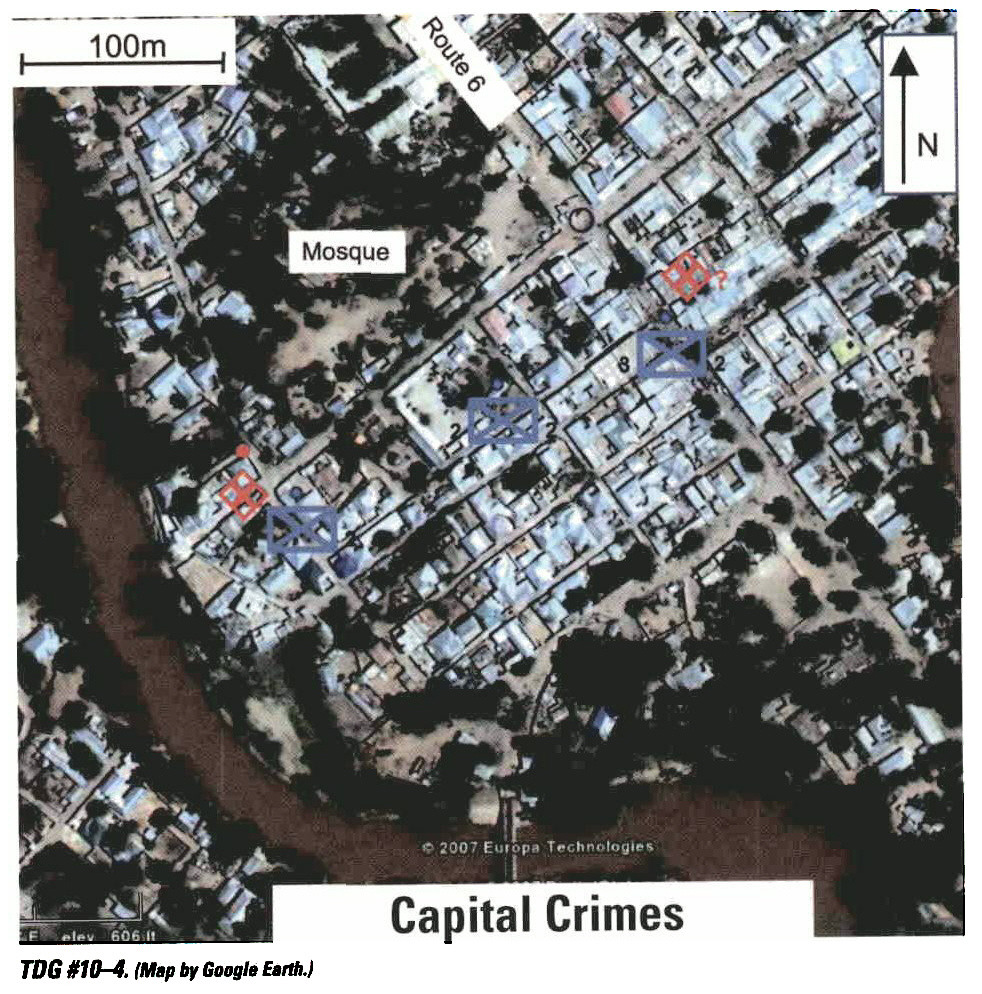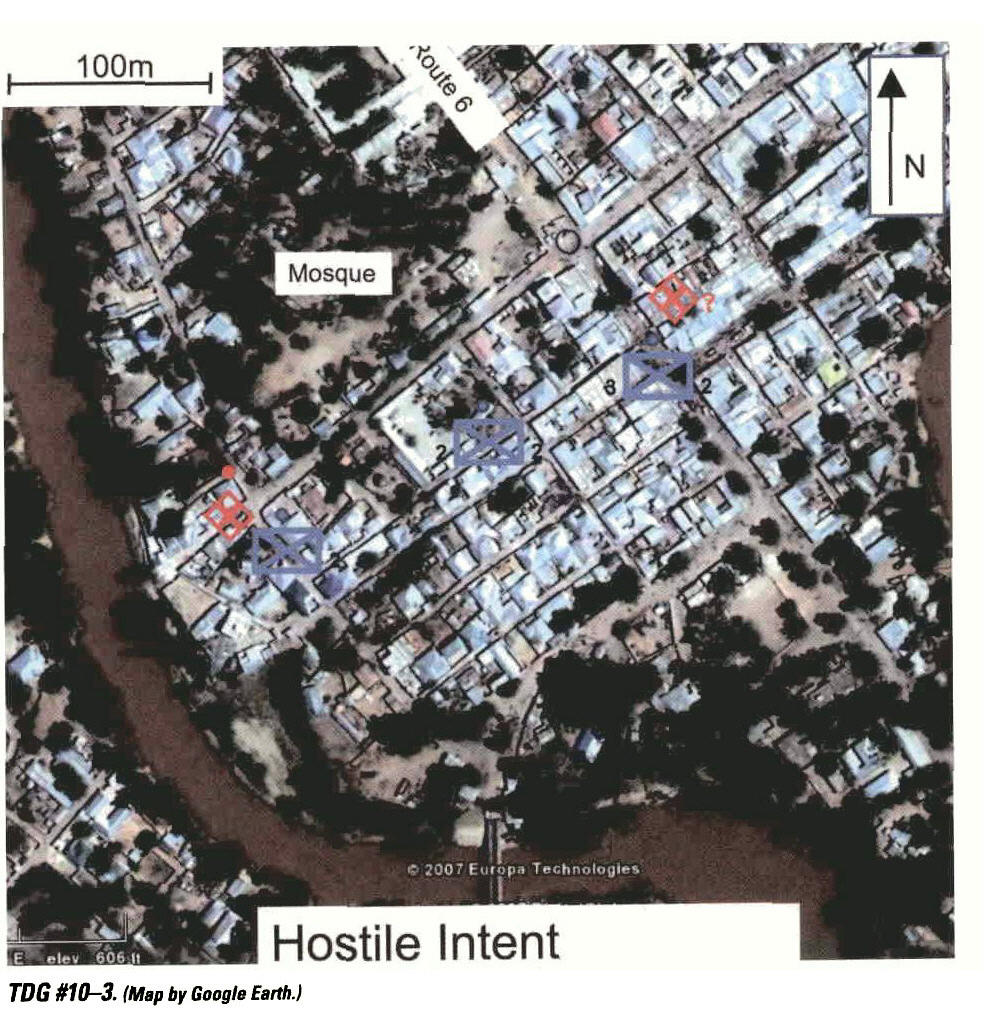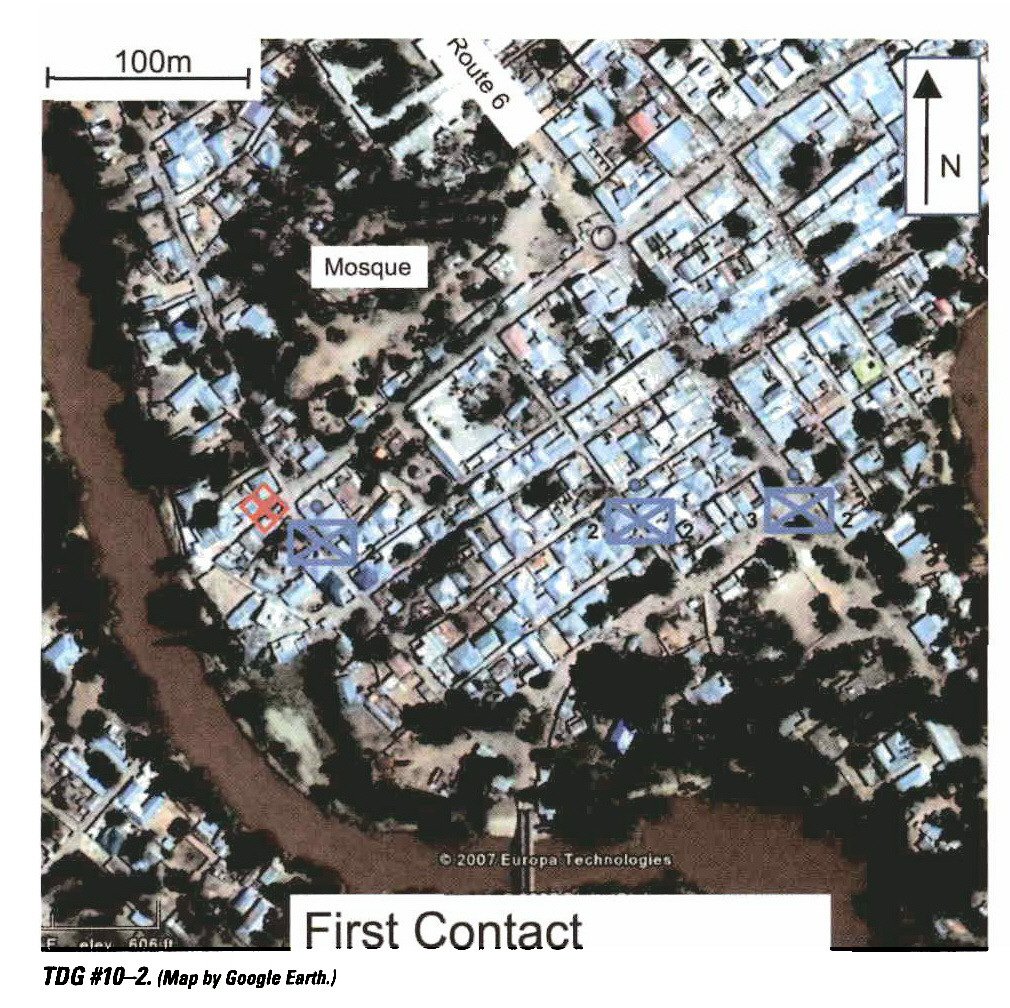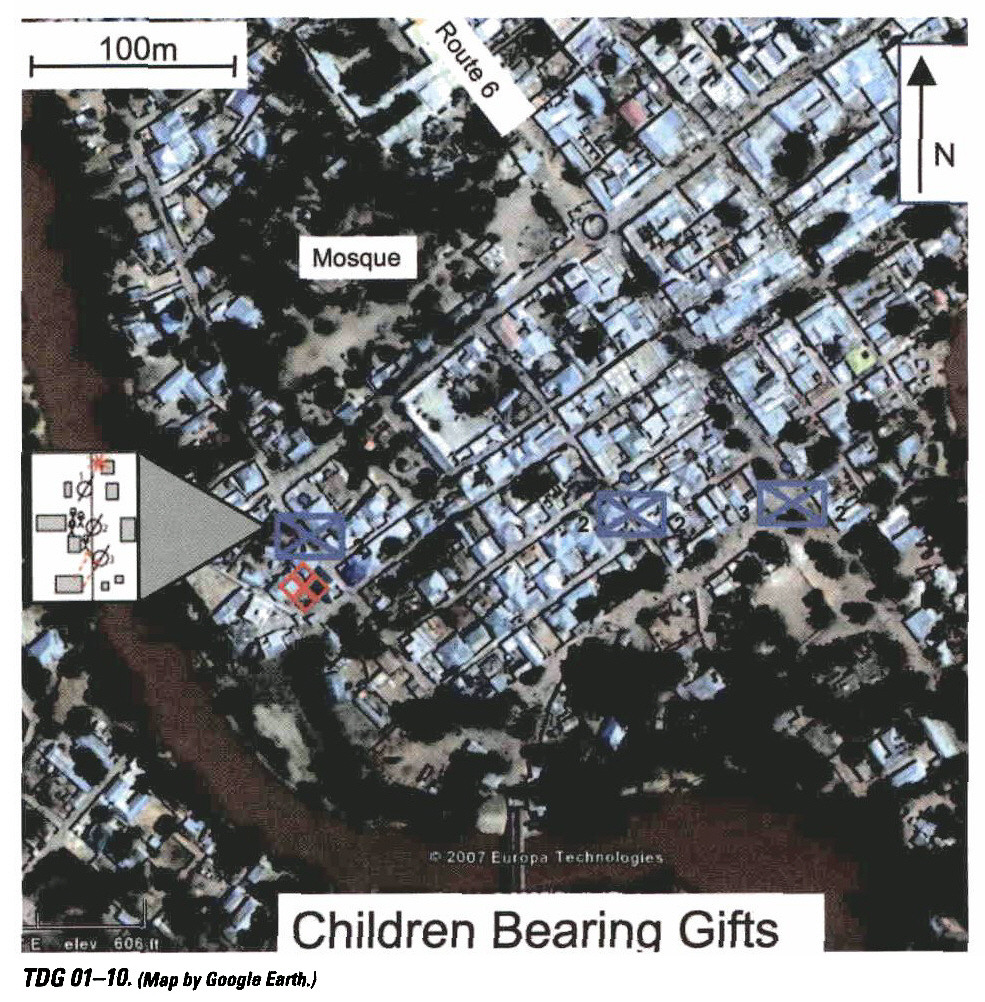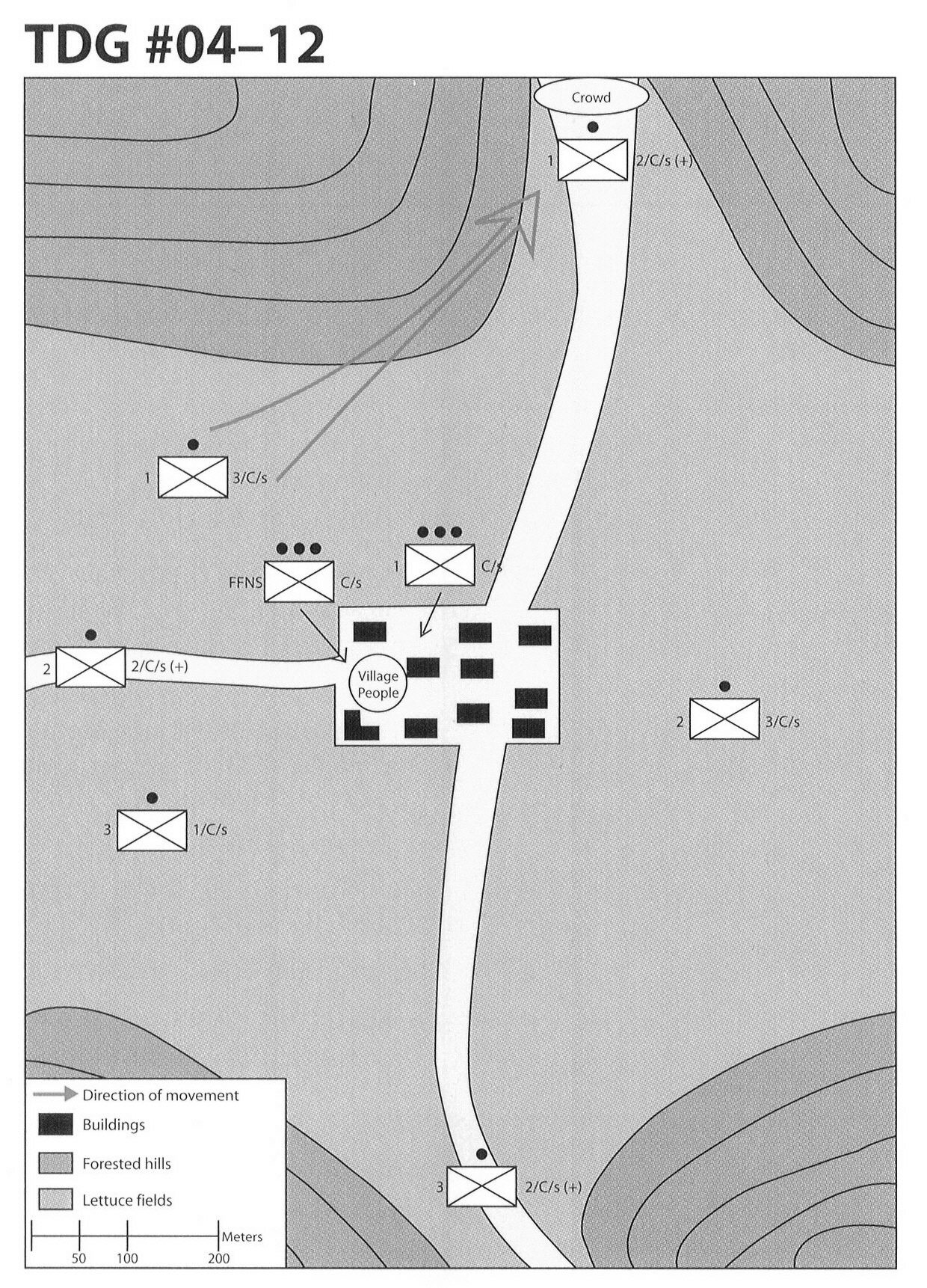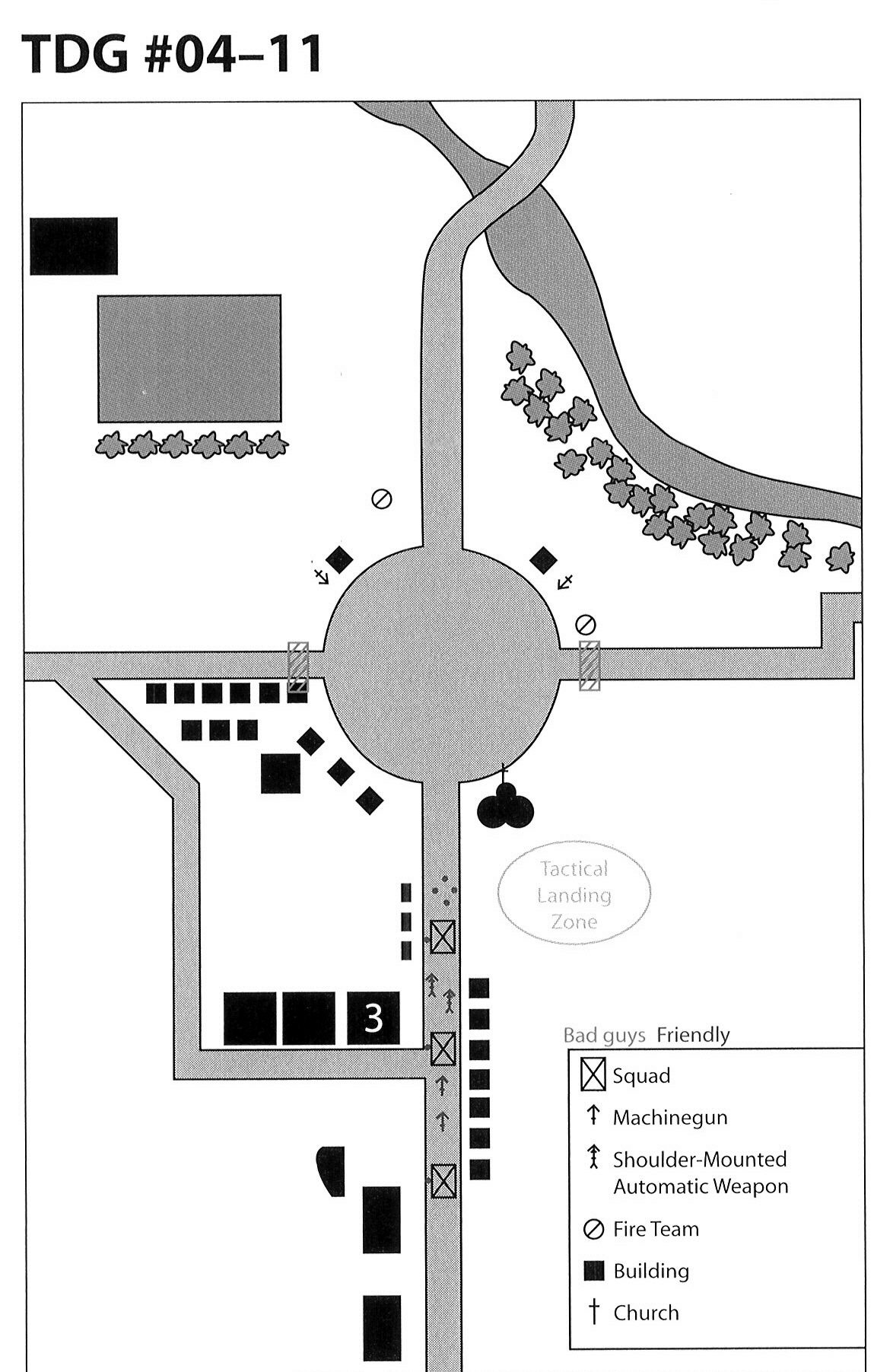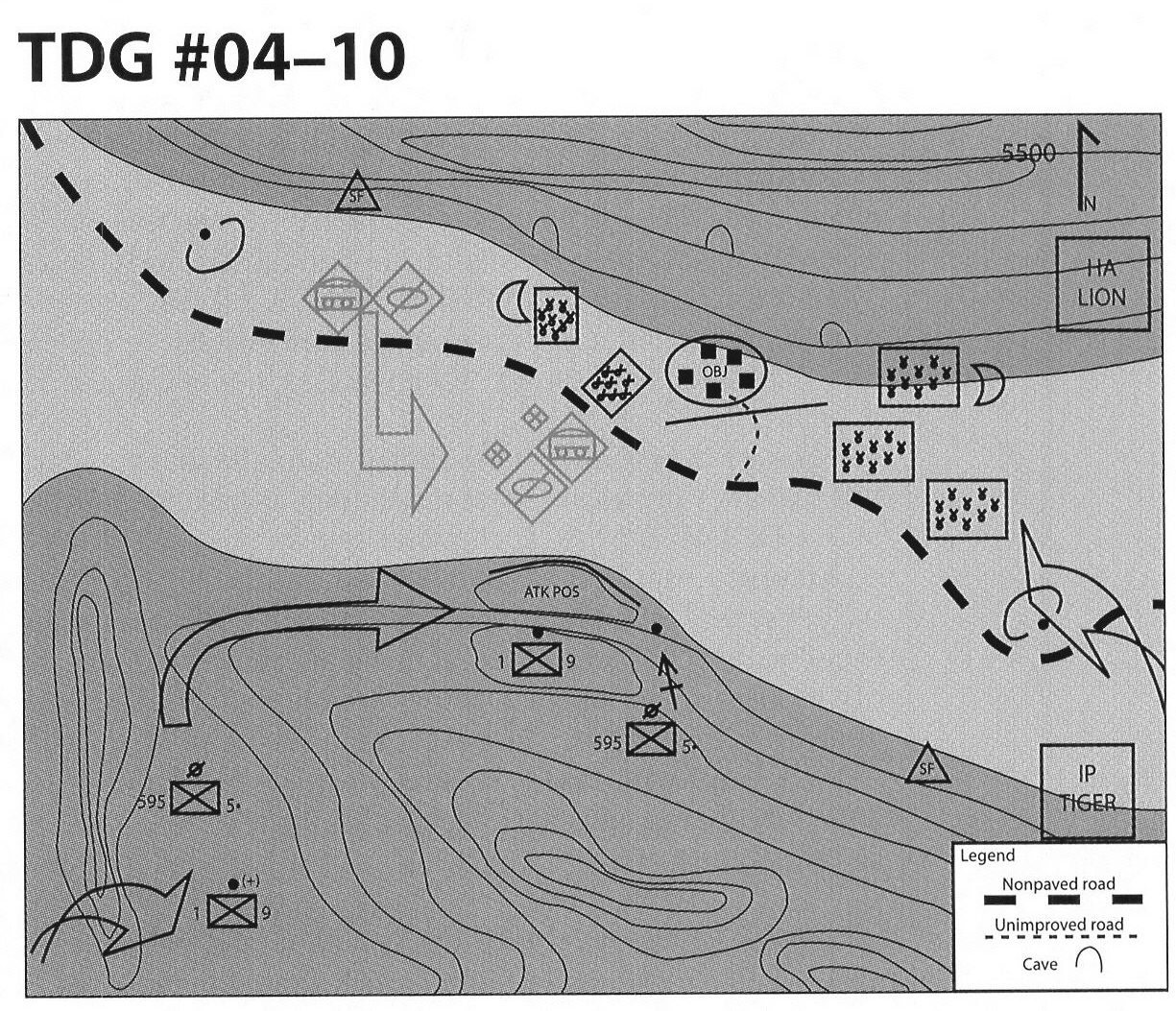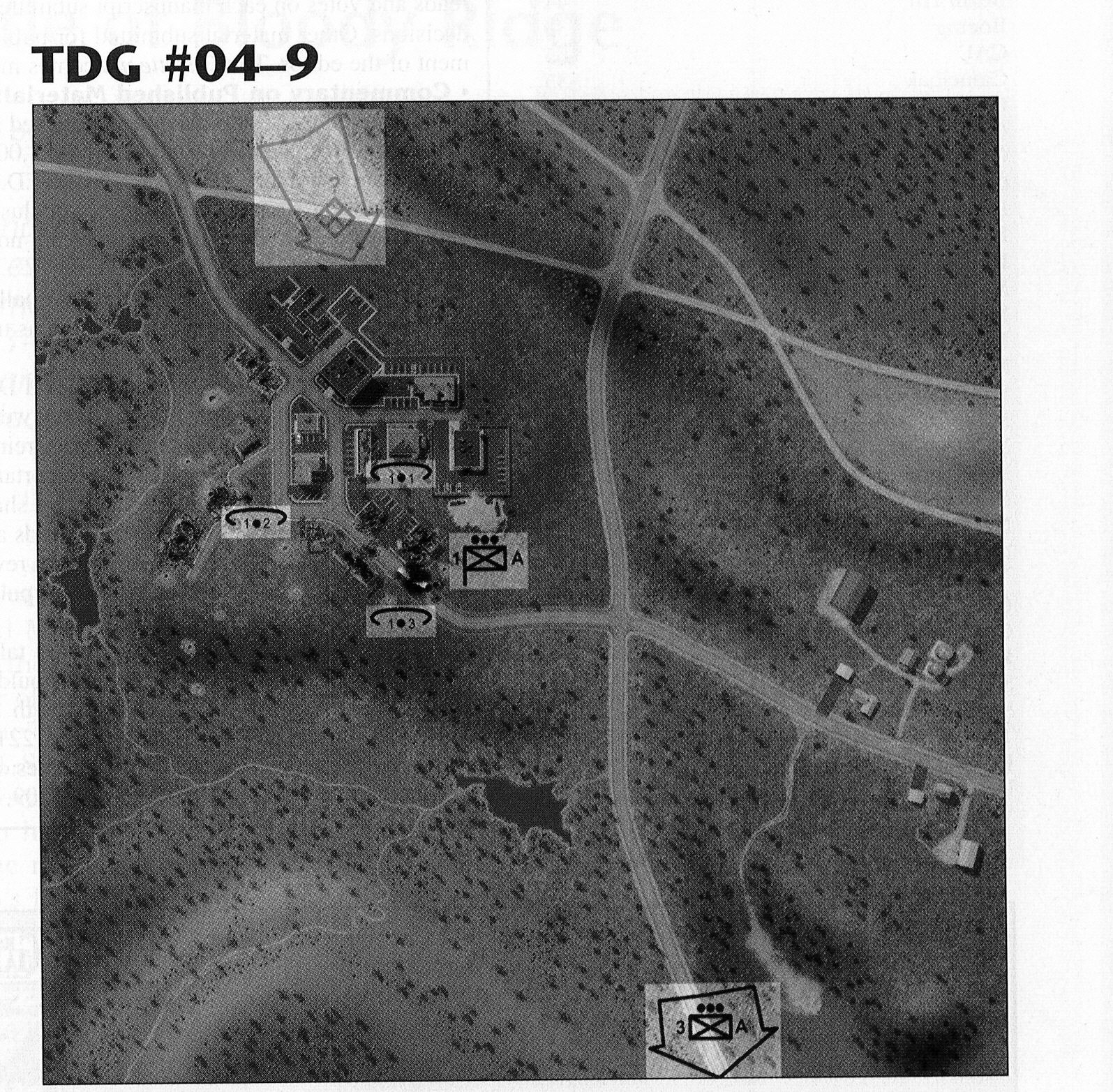by GySgt Paul Nichols, USMC(Ret)
The family of tactical decisionmaking simulations (TDSs) consists of several different wargaming software applications designed to be distributed on compact disk or via the web. The focus of effort during TDS concept development was to enhance the Marine’s decisionmaking ability. TDSs are designed to provide a training capability that could be used to exercise doctrinal, analytical, and intuitive decisionmaking applications and skills. Combining this approach with other operational and leadership initiatives, such as mentoring and leadership development based on experiential learning methods and critical thinking, poses a leverageable opportunity for enhanced performance anytime, anyplace.
The software installs with scenarios, scenario editors to create new scenarios, reference library, and user manuals. TDSs are used at the centers of excellence and simulation centers as well as by units employing the deployable virtual training environment (DVTE) and by individual Marines on their personal computers.
Justification for Game Play
Because a cursory view of the TDS may be that of “playing games” vice executing viable and pertinent training into the already overburdened training schedule, unit leaders may ask themselves, “Do I really have time to play games? Can I justify the application to meet the means?”
Gen Alfred M. Gray, our 29th Commandant, formalized the use of tactical decision games (TDGs) as a means of developing leadership skills through realistic scenarios infused with tactical and doctrinal applications and approaches. While the employment of TDGs became universal throughout the Marine Corps, they still had limitations, such as facilitator experience and the ability to link the applications with the commander’s intent. Too often the TDG of yesteryear focused on the conventional concept of tactics and weapons employment vice a conceptual application to achieve outcomes favorable to friendly forces’ mission objectives and unfavorable to opposing forces. Marine Corps Doctrinal Publication 1 (MCDP 1), Warfighting, specifically addresses this issue as follows:
Our philosophy of command must also exploit the human ability to communicate implicitly. We believe that implicit communication-to communicate through mutual understanding, using a minimum of key, well-understood phrases or even anticipating each other’s thoughts-is a faster, more effective way to communicate than through the use of detailed, explicit instructions. We develop this ability through familiarity and trust, which are based on a shared philosophy and shared experience.
Gen Charles C. Krulak, our 31st Commandant, used a more technical approach to develop decisionmaking capability by authorizing the use of video games as a warfighting development tool and specifically designating Marine Corps Order 1500.55, Military Thinking and Decision Making Exercises. While Gen Krulak provided a more modern approach, it lacked universal application-due to resource limitations, access, and facilitation skills-to link the experiential learning to training applications. Despite the limitations, Gen Krulak expanded the opportunity to integrate gaming through emerging concepts like “the strategic corporal” and human networks that linked noncontiguous operations in diverse environments with informational flows and decisionmaking requirements to meet 21st century operational expectations. TDSs combine the opportunity to link individual study with group training based on the ability to assess, evaluate, and link simulation activity to doctrine, tactics, techniques, and procedures utilized in the warfighting environment.
The ability to leverage time, which is a critical vulnerability when conducting training and operations, requires mission focus and competent operational leadership. Limited time is allocated to meet operational, training, logistical, and administrative goals in the training and operating environment. TDSs provide Marines with operational enablement via simulation that reduces time requirements and amplifies the thought processes required to perform operational and administrative tasks. Wargaming provides the ability to identify operational surfaces and gaps within the unit standing operating procedures and develop corrective actions if needed before the first weapon is drawn from the armory.
All TDSs give the individual or unit the ability to conduct analytical decisionmaking before the scenario begins by issuing the trainees an order and having diem go through the appropriate planning process for their level of command. The following TDSs excel in providing the means to conduct analytical decisionmaking by facilitating an operational unit of Marines working together as a team. The interactions of the units that are created for any given scenario by the end user are conceptual in nature. The focus of effort is on group situational awareness. The representation of units is accomplished with military standard icons moving and interacting on a two-dimensional map. Two to three hours is generally required from the time that the unit’s course of action is created in a scenario until the after-action review (AAR) is completed.
Tactical Operations Marine Corps (TacOps MC). TacOps MC stimulates a virtual tactical exercise without troops (TEWT) from the company to regimental landing team level. TacOps MC is a turn-based simulation. Each turn consists of two phases, an orders phase and a combat phase. Once all orders have been given, the combat phase begins. During the combat phase the units of both forces, under computer control, simultaneously carry out their orders for movement and combat in four 15-second pulses. You only observe during the combat phase; you cannot give or change orders until the next orders phase.
The primary focus of TacOps MC, is conventional ground operations. The movement and interaction of computer-generated infantry and armor units are treated with great detail. Supporting air and artillery activities are treated more conceptually. The simulation may be played alone against an opposing force (OpFor) computer opponent or between two or more players on one or more computers. TacOps MC is available for download by all Marines from the TDS web site.
Manne Air-Ground Task Force XXI (MAGTF XXI). This simulation stimulates a virtual TEWT from the company to the Marine expeditionary unit level. MAGTF XXI is a realtime simulation; once the simulation is started it will wargame the course of action. Orders are received and executed while the scenario plays out. The duration of the training scenario is determined by the trainer. The simulation may be played alone against an OpFor computer opponent or between two or more players on multiple, networked computers. The primary focus of the simulation is MAGTF operations. The movement and interaction of computer-generated ground, air, and naval elements are treated conceptually.
MAGTF XXI is used to conduct staff training exercises at the Expeditionary Warfare School as well as during the Infantry Operations Chief Course at the School of Infantry-East. With an interface to command and control personal computer (C2PC), MAGTF XXI provides the , capability for the training audience to use the actual command, control, communications, computers, and intelligence gear they would use in a real environment. MAGTF XXI and the C2PC gateway are available for download by all Marines from die TDS web site.
Experience is a critical vulnerability for intuitive decisionmaking. Multiple experiences allow the decisionmaker to consciously and subconsciously draw on the experienced past and rapidly make current decisions. In addition to conducting small unit analytical decisionmaking during the planning phase prior to executing the scenario, the following TDSs afford the opportunity to run multiple iterations of the same scenario in a short amount of time. The scenario can be focused on specific tasks. An example is an infantry squad leader working on controlling direct fires. The scenario can be limited to 5 minutes followed by a 5 minute AAR with the leader asking the following questions: What happened? Why did it happen? How could it have been done better? Within 1 hour the trainee would have made multiple decisions all in relation to the control of fires that become “experiences” that the Marine can draw from while using intuitive decisionmaking in the future.
Close Combat Marine (CCM). This TDS stimulates a virtual TEWT from the squad to platoon levels. CCM is a realtime simulation; once the simulation is started it will wargame the course of action. Orders are received and executed while the scenario plays out. The duration of the training scenario is determined by the trainer.
The primary focus of CCM is conventional ground operations. The movement and interaction of computer-generated infantry units are treated with great detail. Supporting air and artillery activities are treated more conceptually. The simulation may be played alone against an OpFor computer opponent or between two or more players on multiple, networked computers.
CCM is used to conduct training exercises at the Infantry Officer Course as well as the Staff Noncommissioned Officers Career Distance Education Program Marine Corps Institute 8100. Use of CCM outside of the Marine Corps includes the Command and General Staff College at Fort Leavenworth, KS, the Army Modeling and Simulation Analyst (FA-57) Course, and the Royal Air Force for the airfield defense forces. CCM comes with a complete training support package with a section in the workbook detailing how to create scenarios to support a unit’s mission essential task list, collective training standards, and individual training standards. CCM is available for download by all Marines from the TDS web site.
Additional requirements that have been identified and are being worked on for CCM include enhancing the capability to control supporting arms for the company and platoon levels, antiterrorism and force protection capabilities, and the addition of coalition and civilian models to train noncontiguous operations in diverse environments.
Forward Observer Personal Computer Simulation (FOPCSim). This training tool simulates the conduct of basic call for fire training on actual Twentynine Palms terrain. Each mission is scored based on the Fort Sill, OK observed fire grading standard. FOPCSim has realistic enemy targets that the user must correctly identify and then determine the correct munitions with which to engage.
The primary focus of FOPCSim is conventional call for supporting arms fire. Using computer-generated procedural formats, artillery and mortar fires are covered in great detail. Currently, the simulation is played alone against computer-generated targets and scored at the completion of training. FOPCSim is used to conduct initial and sustainment-level training at the School of Infantry-East Advanced Infantry Training Course. FOPCSim was developed by Marines at the Naval Postgraduate School. It has a wide and expanding use throughout the Marine Corps and Army. FOPCSim comes with a complete training support package and is available for download by all Marines from the TDS web site.
Additional requirements that have been identified and are being worked on for FOPCSim include the ability to network multiple observers in the same environment, moving targets, and the ability to network directly with the advanced field artillery tactical data system. These added capabilities will allow FOPCSim to be used as a stand-alone trainer or as part of a larger virtual training environment within the DVTE combined arms network (CAN).
Virtual Battlefield Systems 1 (VBS-1). VBS-1 is a first-person shooter-type simulation originally developed as part of the DVTE infantry tool kit. Although similar in look and feel to a commercially available video game, such as Battlefield 2, this TDS is designed to allow Marines to conduct training in this virtual battlespace. Prior to “playing” the scenario, the trainee receives an order from higher headquarters and issues orders to subordinates. Once the simulation is started it must be facilitated in order to focus the training. Orders are received and executed while the scenario plays out. The duration of the training scenario is determined by the trainer.
The primary focus of VBS-1 is conventional ground operations. The movement and interaction of computer-generated forces is treated more conceptually with each player controlling an entity in the scenario. The simulation may be played alone against an OpFor computer opponent or between two or more players on multiple, networked computers. Caution must be used when playing alone due to the conceptual nature of the computer-generated forces. VBS-1 has restrictive licensing; it cannot be freely distributed but can be scheduled for training at simulation centers.
Since VBS-1 was released, an additional version, DARWARS Ambush!, was developed under a Defense Advanced Research Projects Agency effort. Both VBS-1 and DARWARS Ambush! are based on the commercially available Operation FLASH POINT. VBS-1 and DARWARS Ambush! are being used to conduct convoy operations at the simulation centers.
Additional requirements that have been identified and are being worked on for a first-person shooter TDS include the ability to conduct TEWTs, editing tools, unlimited distribution to all Marines, the ability to conduct mission rehearsal, and a connection to joint semiautomated forces and the CAN. This effort is being referred to as the “virtual tool kit.”
Conclusion
This brief synopsis provides some detail about the family of TDSs currently available to all Marines, as well as the specific decisionmaking skills that can be addressed with each TDS. As stated, all of these TDSs (except VBS-1) are available for download from the TDS mission support center at <www.usmc-tds-msc.com>. In addition, this web site provides access to supporting documentation as well as collaborative forums for the communities who use these TDSs for training. For more information on TDSs, please visit the mission support center.


